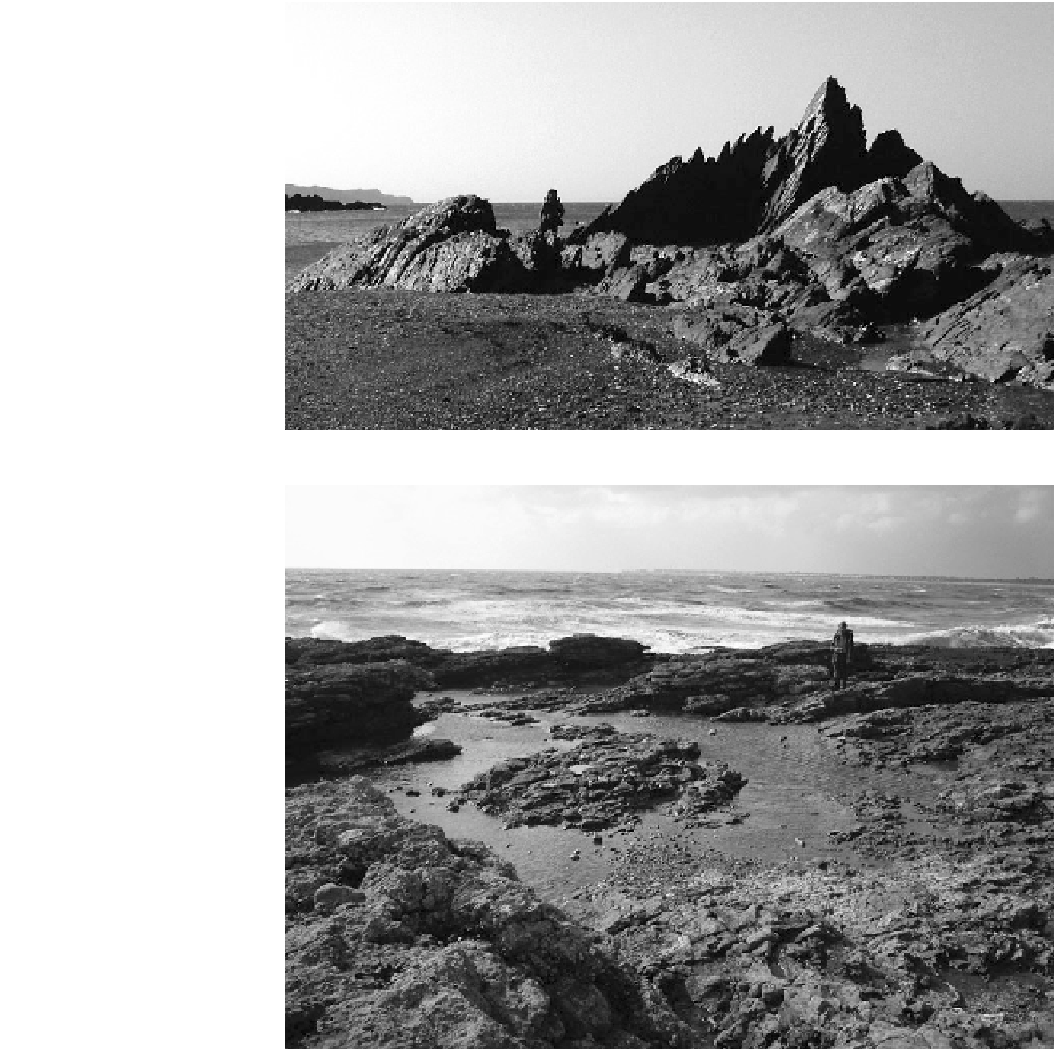Geoscience Reference
In-Depth Information
Fig. 7.17
Fluting in bedrock at
Ifracombe, Devon, U.K
Fig. 7.18
Shallow vortex pool
with central plug at Ogmore,
south Wales
tsunami flow along the New South Wales coast of Australia
Also relevant are numerous deposits of boulders around
the channel and estuary (Bryant and Haslett
2007
). The
characteristics of these boulders and the velocities and wave
heights required to move them are summarized in
Table
7.2
. The latter are calculated using the equations
zone is found at Brean Down and weighs 132 tonnes. It
requires a tsunami wave only 5.3 m high to move it as
opposed to a storm wave 21.3 m high. Because of its flat
profile,
flow—found at Tears Point—requires a tsunami height of 8.
4 m and a storm wave height of 33.6 m to transport it. The
highest storm waves measured in the channel are much less
than these heights. The 1:50 year wave height is about 10 m
at the ocean end of the channel, 4.7 m at sites like Brean
Down and Tears Point half way up the Channel, and 3.5 m
at the entrance to the Severn Estuary. In contrast, theoretical
tsunami wave heights required to move the boulders
increase inland from 4 m at the ocean end to 6 m at the
beginning of the Severn Estuary. This increase is inversely
proportional to the height of storm waves and the width of
the
the
boulder
with
the
greatest
resistance
to
channel—the
latter
being
a
result
that
would
be

